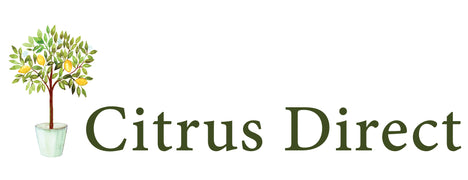Our Journey to Become Spray Free-A commitment to citrus health, sustainability, and beneficial insects.
Jun 02, 2025
When we first began growing citrus, our goal was to foster a spray free thriving natural environment that would keep insect pests in check. But we quickly learned how ambitious that was.
Despite our efforts, we hadn’t sown enough seed to create true protection across the nursery. Worse still, someone sprayed all our beneficial plants with Round Up. Our predator insects died, pest damage increased, and we reluctantly returned to spraying. But not anymore.
Our Commitment Moving Forward
This year, we’re all in. We’re working hard to nurture a balanced ecosystem around our citrus trees—one where beneficial insects thrive, pests are kept at bay, and sprays aren't needed.
Here’s what we’re focusing on:
- Keeping citrus plants healthy, well-fed, and stress-free
- No insecticides or oils—not even the “gentle” ones
- Ensuring year-round food and water for beneficial insects
- Providing the right habitat and environment for long-term insect life
Why We're Stopping Spraying
- Sprays don’t discriminate—they kill both pests and the good insects we want to keep.
- Many beneficial species are more sensitive to sprays than pests are.
- Better for our health and the environment as a whole.

Going spray-free isn’t without challenges:
- Predator insects may target our crop before beneficial insects are well established
- We might need to introduce beneficial insects artificially in the short term
- Our trees will show the odd sign of insect damage on the leaves.
- We’re surrounded by kiwifruit and avocado orchards—spray drift is real
But it’s a path we believe in, and we’re sticking with it.

Photo Above: Bumble Bee on the Salvia in the nursery
Creating Habitat for the Helpers
Beneficial insects and animals aren’t just visitors—they need a safe home. We're creating habitats that include:
- Water sources (ponds, bird baths, even buckets)
- Rocks and rotting logs for frogs, earwigs, dragonflies, and fungi
- Plenty of mulch and compost to feed the soil and fuel growth
- A mix of annual and perennial beneficial plants in garden beds and pots

Photo Above: A frog in the nursery
Year-Round Food Supply
Introducing helpful insects is the easy part—keeping them takes planning. One of the ways to do this is to ensure their habitat provides enough food year-round, especially in the colder months when there are less predatory insects. It is important to have a mix of Summer (S), Autumn (A), Winter (W), Spring (Sp), and Year Round (Yr), flowering nectar and pollen producing plants.
We’re tucking them into our vegetable garden, around stock trees, and throughout the nursery to keep pollinators and predator insects well-fed and happy.
Try Our Beneficial Mix
We’re so thrilled with our chosen seed varieties that we’ve made them available for sale—our ready-mixed beneficial & pollinator seed blend for citrus trees. It’s designed specifically to support spray-free growing and citrus health.
We'll keep this blog updated as we learn, adapt, and move closer to a truly sustainable, spray-free citrus nursery. It’s a journey—but we’re excited to take it.
If you’re on a similar path or experimenting with beneficial insects, we’d love to hear your story too

Photo above: Nasturtiums




